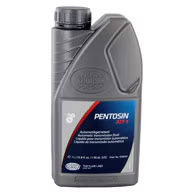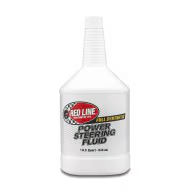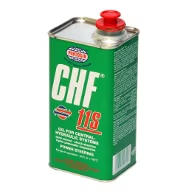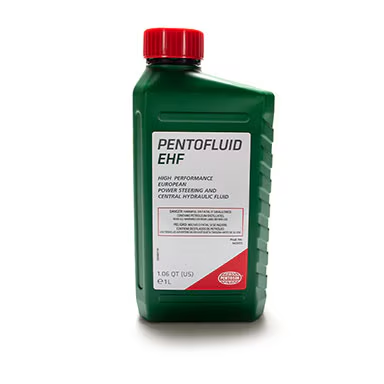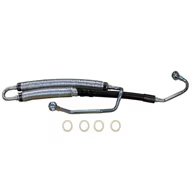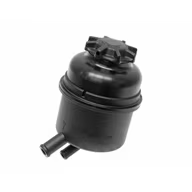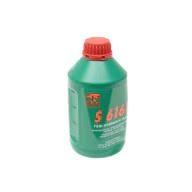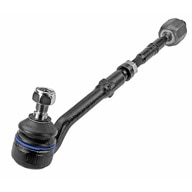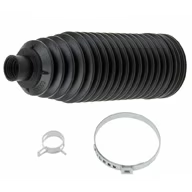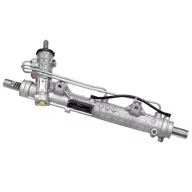|
BMW Power Steering System
BMW Power Steering System, Rack, Hoses, and Lines
Aside from a few exceptions, BMW uses power-assisted rack-and-pinion steering on every model. In concept, modern BMWs are no different than the power steering systems from 40 years ago - turning the steering wheel rotates a shaft, which slides a toothed rack with assistance from a hydraulic pump or electric motor, pushing and pulling on the tie rods at each wheel to point the tires in the direction you want to go.
Several major advancements have been made since the original 1970s power rack-and-pinion systems and BMW is now all-electric. But millions of hydraulic power steering systems are still on the road today and they need to be maintained. Steering racks are expensive and replacement can be very invasive. Preventative maintenance such as fresh fluid and replacing leaking hoses will help prolong the life of the rack. However, looking at the power steering system on your car can be intimidating with many hoses crisscrossing the engine bay. We'll explain the layout and function below.
All hydraulic systems will have 4-5 hoses/pipes that carry hydraulic fluid from the reservoir, to the pump, to the rack, and then back to the reservoir. On later cars one of these hoses is actually a metal cooler that sits in the airflow and cools the fluid after it leaves the rack. Factory BMW hoses are reinforced rubber with metal fittings except where the hoses attach to the reservoir with hose clamps. Below is a diagram showing a typical hose layout. This is for an E46 M3 but nearly all BMWs using a belt-driven PS pump will have a similar hose layout.
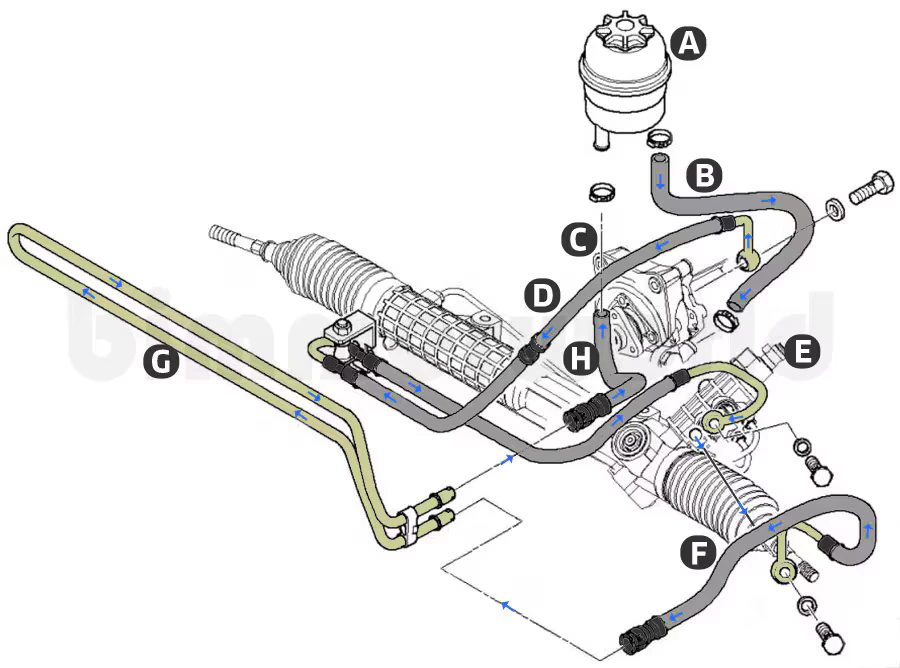
PS hose layout shown for E46 M3. This is typical for all BMW hydraulic power steering system hoses.
A = Fluid Reservoir | B = Inlet Hose ("Intake Manifold") | C = Power Steering Pump | D = Pressure Hose
E = Steering Rack | F = Return Pipe | G = Fluid Cooling Pipes ("Cooling Coil") | H = Return Hose ("Radiator Return Line")
A. Power Steering Reservoir, aka "Oil Carrier". This sits at the top of your engine bay, usually on the driver's side. You can top off or refill your fluid in this container (make sure you use the correct fluid - see below!). Also inside is a filter that will trap metal and other foreign particles so they do not reenter the system and cause damage to the pump or rack. The filter is not serviceable so it's a great idea to replace the reservoir at some point.
B. Supply Hose, aka "Intake Manifold" or "Suction Pipe". A rubber hose running from the reservoir that supplies the power steering pump with fluid. Crimped hose clamps attach it at both ends. These clamps are crimped into place and cannot be re-used so we recommend getting the appropriate premium traditional clamps if you're ordering new hoses. As with any other rubber hose, this one will leak at some point from either dry rotting or swelling from over-saturation.
C. Power Steering Pump, aka "Vane Pump". The internals of a PS pump are quite simple but the bearings can become dry, requiring the complete replacement of the pump itself. The PS pump is usually driven from the same serpentine belt as the alternator and water pump.
D. Pressure Hose, aka "Expansion Hose". This runs from the pump to the rack. At either end is a hard metal line secured with a bolt and copper crush washer. The hose has extra length so the system can have more fluid capacity. Unfortunately it has a lot fittings where rubber hose meets metal line. These fittings are compression crimp-style swage ("swedge") fittings that are very common in the automotive world. These swage fittings are the most common area for PS leaks on your BMW. It's easier to replace the entire line with a new OEM or BMW part than to try and repair the line.
E. Steering Rack, aka "Hydro Steering Box". Most BMWs use rack-and-pinion steering. The pinion is the steering shaft and it meets the steering rack at an angle. Turning the steering wheel turns the pinion shaft and the pinion teeth mesh with the rack teeth to move the rack side-to-side. In this way, power and manual steering racks function the same. The power assist comes from the hydraulic fluid pushing on a piston which moves the rack. Manual steering is not recommended unless you have a vintage 2002 or E21 with skinny tires.
F. Outlet Pipe, aka "Return Pipe". This hose runs the fluid out of the rack and into the steering cooler. On older models there is no cooler and this hose runs back to the reservoir. Like the Pressure Hose it has a metal pipe with swaged fittings that are prone to leaking.
G. Power Steering Cooler, aka "Cooling Coil" or "Steering Loop". This is a hard metal line that bends back on itself, doubling the surface area. This pipe is usually placed at the front or bottom of the rack so it's in a little bit of airflow. The metal pipe exposed to air has a cooling effect to the fluid inside. Leaks are not very common here but rust and corrosion are. And it's position in the airflow also exposes it to rocks and debris where it can be damaged. Older BMW models like the E30 325i did not have a cooler.
H. Return Hose, aka "Radiator Return Line". BMW has two hoses they call a Return Line. We're going to clarify things and call whichever hose attaches to the reservoir is the Return. "F" in the diagram we are re-naming the Outlet Hose. In this diagram, the Return comes from the cooler and returns the fluid to the reservoir. Like the Inlet Hose (B) it has non-reusable clamping hose clamps where the hose meets the reservoir. Leaks are very common here.
BMW Power Steering Fluid
Your BMW power steering is filled with either ATF or hydraulic oil (CHF) and it is vital that you use the correct fluid as the two cannot be mixed. The cap on your fluid reservoir will indicate which fluid to use*. ATF has been the traditional power steering fluid for decades and you can use any off-the-shelf brand or type (Dexron III seems to be very common at auto parts stores for a cheap top-off). But if you have a green label on the reservoir cap you must use CHF. The two fluids are not compatible** and may not mix together (immiscible).
* BMW used the same reservoir cap for either but added a green sticker for CHF cars. They really should have issued a new cap because under the sticker the cap might say ATF! If the CHF label comes unglued and falls off, you could be left with a misleading cap! You can confirm the fluid by checking the color of the fluid - red is ATF, green is CHF.
** The difference in ATF and CHF appears to be in the type of seals used in the hydraulic system. An ATF system has seals that are robust enough to work with petroleum-based ATF or PSF (Power Steering Fluid). A system originally designed to use CHF has a different type of rubber seal. Using a petroleum-based ATF in a CHF system will cause the seals to swell and eventually degrade, causing leaks and damage. Using a synthetic ATF is also not recommended because the chemical additives will also degrade the seals. Using CHF in an ATF system is acceptable as the CHF chemical composition is not as “harsh” as ATF but not usually done because CHF is more expensive. We're not chemists or materials engineers but this is what we have gathered from research.
CHF stands for Central Hydraulic Fluid and it means your vehicle was engineered to draw hydraulic fluid from a single source. The fluid for the power steering system is shared with another system - such as self-leveling suspensions, Dynamic Drive, power convertible tops, or just about any other system that is hydraulically driven. It doesn't matter if your car doesn't have these other systems, BMW supplied your car from the assembly line with CHF and you must continue using it. The OEM supplier has a lower-cost CHF alternative called EHF. The new EHF is petroleum-based but compatible with the synthetic CHF11S.
Nearly all hoses are compatible with either. However, new or rebuilt pumps and racks are typically designed for CHF only. Most of the industry has moved on from ATF (that was petroleum based) to the newer synthetic CHF. When replacing a pump or rack you must drain the entire system of the old fluid, flush thoroughly with new CHF or EHF fluid and then fill with CHF/EHF and bleed the air out. Using ATF in a CHF system can deteriorate seals in the hydraulic system, leading to leaks or poor performance. Since some cars rely on the CHF for braking assist you should only be using the correct fluid. There could be other factors as well, such as viscosity differences at various temps.
BMW Power Steering Fluid for E46 & E9X Track/Race Cars
We have found that in some circumstances, the original hydraulic fluid is too thin for track use. When it gets hot it becomes even thinner, breaks down, and leads to pump failure. The original hydraulic fluid is amazing as an OEM fluid for street use in all climates (especially cold) but exceeding its design limits will have consequences. The solution we found is to use Red Line D4 ATF. “But didn't you just say above that ATF was bad?” Yes, but so is overheating the stock fluid. The Red Line D4 ATF is a much thicker viscosity and has a very strong chemical construction that won't break down as easily under heat and stress. It's a better, stronger fluid for this environment. Could it damage seals and cause leaks? Yes, and you would lose any warranty coverage by using ATF. But the gains outweigh the losses in this case. This special circumstance really only applies to full track cars with large sticky tires that gives the steering system a workout. We have found this only applies to E46 and E9X cars. Some models have other hydraulic systems in the car that require the thinner CHF11S fluid and should never use ATF (even on track).
BMW Power Steering Leaks
Is the bottom of your engine bay an oily mess? It's not uncommon to see a coating of oil throughout your engine bay and BMW oil leaks can usually be traced to a few problem areas: valve cover, oil filter housing, oil pan, and power steering hoses. Engine oil is always a dark brown or black color. But power steering fluid is red (for ATF) or green (for hydraulic fluid) which makes identifying leaks easier.
Power steering leaks usually come from two sources: the hose connections to the fluid reservoir or the crimped metal fittings used where rubber hose meets metal pipe. The connection to the fluid reservoir is by a crimped hose clamp often referred to as an Oetiker clamp. These are one-time use clamps installed with special crimping pliers. Over time the crimp portion weakens and the clamp is allowed to expand, creating a leak. Since there is no adjustment you can't tighten the clamp to stop the leak. However, you may be able to remove the Oetiker clamp very carefully and install a traditional clamp in its place. As long as the hose itself isn't damaged or swollen you can tighten the clamp and stop the leak.
Power steering hose assemblies are rubber hoses combined with metal pipes. Most of the Pressure or Outlet hoses are built this way so the hose can attach to the steering rack or pump. If your leaks are not coming from the banjo bolts and crush washers (easy fix) it's likely coming from the crimped connection between rubber and metal. This is not an easy fix and a full replacement is typically the best course of action. Though they can be expensive, depending on how complex the hose is, a replacement should give you many years and tens of thousands of miles of leak-free service.
BMW Steering Options, Systems, and Technology
Think turning the steering wheel turns the front wheels? You're wrong. There is so much more going on between the steering wheel and the road wheel that almost no one knows about let alone understands. The last time BMW offered manual steering was on the earliest Euro E30! And since then the systems and technology have made several leaps. The other side of the coin is that steering racks have not changed all that much - they are still using hydraulic fluid and grease even if the source of steering assist has migrated from a hydraulic pump to electric motors.
Servotronic
An increase in steering effort by way of reducing power steering assistance. As vehicle speed increases the amount of pressure from the pump is reduced, thereby increasing steering effort (heavier steering). The faster you go the heavier the steering gets. This feature was released on multiple models on a limited basis in the late 1990s. The first versions used a mechanical bleed valve on the power steering pump while later electric systems simply reduced motor output. Some form of Servotronic exists on every BMW since electric systems were introduced.
Electric Power Steering (EPS)
Electric steering assist comes from an electric motor mounted on the steering rack or column instead of a remote pump and fluid reservoir. The benefits of this system make it attractive: fewer (or no) hydraulic lines in the engine bay, leading to fewer oil leaks, less maintenance, and removing the parasitic drag that the hydraulic pump has on the engine (improving fuel economy and power efficiency). It's also easy for BMW to fine-tune and change the steering characteristics, i.e. heavier steering for sporty models. It's also a necessity for such technology as self-parking and automated driving.
Electric power steering was first introduced on the E85 Z4 models in 2004 and continues with almost every subsequent new model thereafter.
Active Steering
Active Steering is a form of electric power steering but with a different gear set within the EPS module. Active Steering will alter the angle of the road wheels in relation to the steering wheel input and vehicle speed. More steering angle at low speeds such as parking but reduced angle when at speed. You won't have to spin the wheel through 3-4 turns to parallel park but the steering will not be darty and nervous when driving fast.
Active Steering was first introduced on the E60 5-series in 2004 but remained an option on all models. An updated Integral Active Steering feature was offered on the F10 5-series for 2011. The E60 system combined electric and hydraulic assistance to form a very complex system. The Integral system on the F10 became all-electric and included a rear-wheel steering feature.
Rear Wheel Steering was implemented with the F01 7-series and consists of an actuator and control unit on the rear suspension. The actuator will push/pull on the rear upper track rods in the suspension, changing the toe on the rear wheels. Total travel was 8mm which equated to a maximum toe change of 3°. BMW's name for it is Rear Axle Slip Angle Control (HSR) and was only installed on cars with front Integral Active Steering and Dynamic Handling Package.
Variable Sport Steering
Variable Sport Steering combines a variable steering rack with an electric motor for the first time. In the past it was possible to vary steering response by changing the teeth on the steering rack - finer teeth meant a quicker ratio that could change to coarser teeth to slow steering response.
Variable Sport Steering was first introduced on the F25 X3 models in 2011.
Dynamic Drive and Active Roll Control
Dynamic Drive or Active Roll Stabilization (ARS) is a set of variable sway bars on the front and rear axles. Instead of a fixed sway bar of consistent diameter, the Dynamic Drive uses a variable sway bar. Bigger bars act like a large lever in the suspension, forcing wheels back to the pavement during extreme cornering. Unfortunately this tends to limit suspension travel and make the ride stiffer, especially over single wheel bumps. Dynamic Drive is able to allow single wheels to move over bumps without engaging the sway bar, keeping the ride more comfortable until the system is activated during hard cornering. This doesn't have a lot to do with steering systems except the Dynamic Drive components and steering systems often occupy the same space inside the engine bay and BMW has different parts for the various layouts. If you're looking at your front sway bar and it seems to have a large electric motor in the middle, instead of a consistent diameter across, that is the Dynamic Drive actuator.
Shop BMW Steering Parts:
| Sort by Name | Sort by Price |


